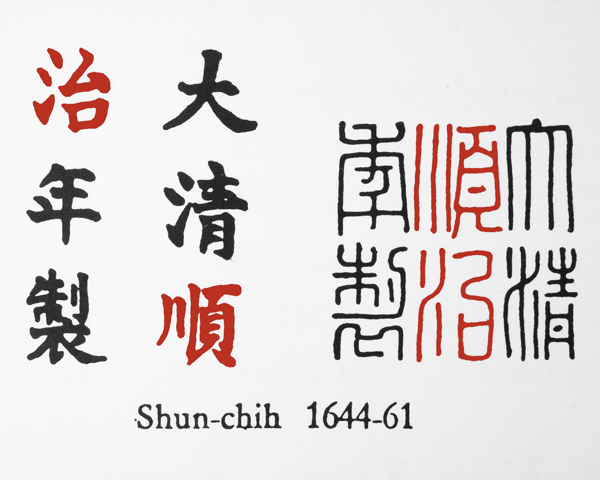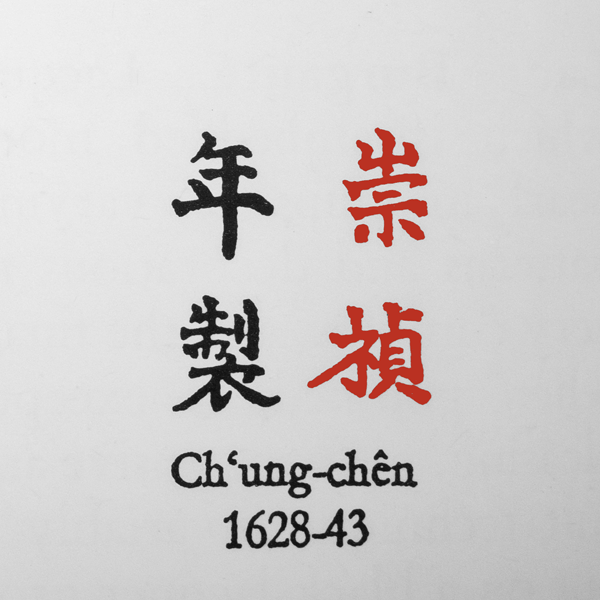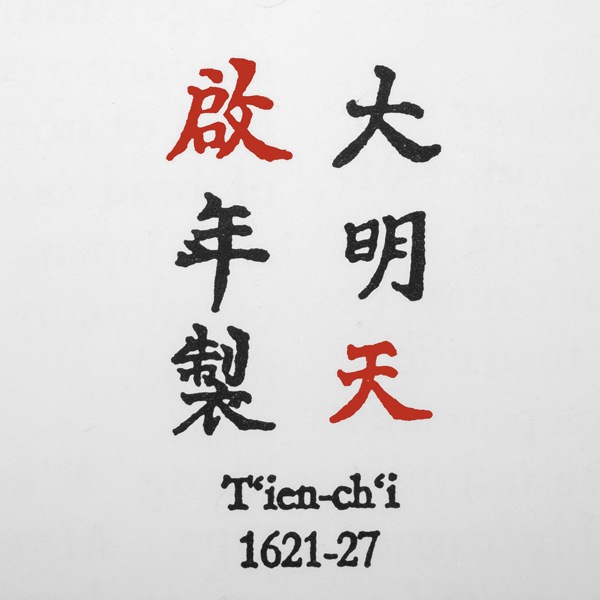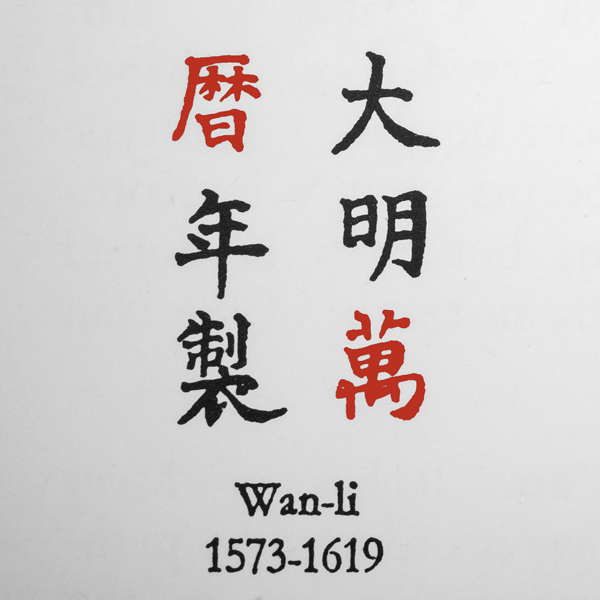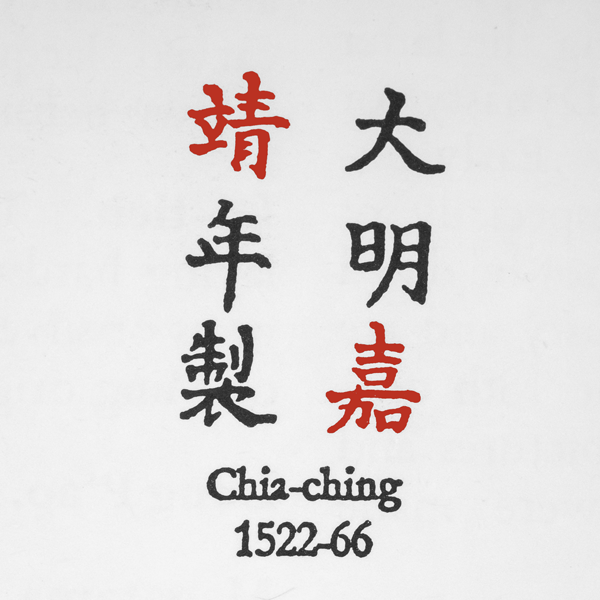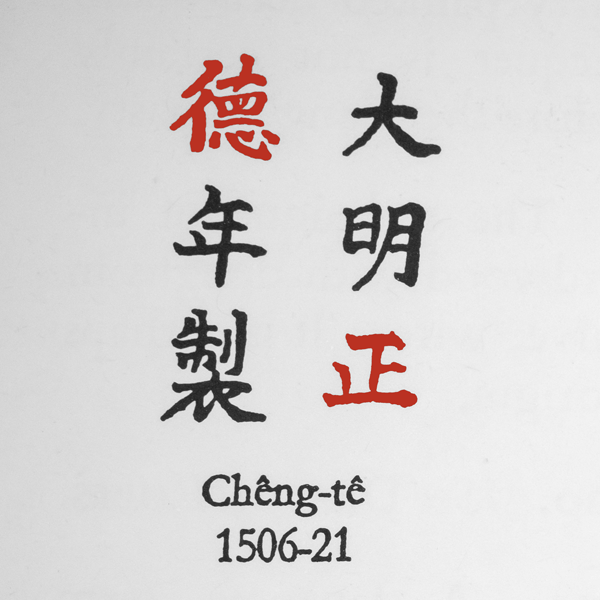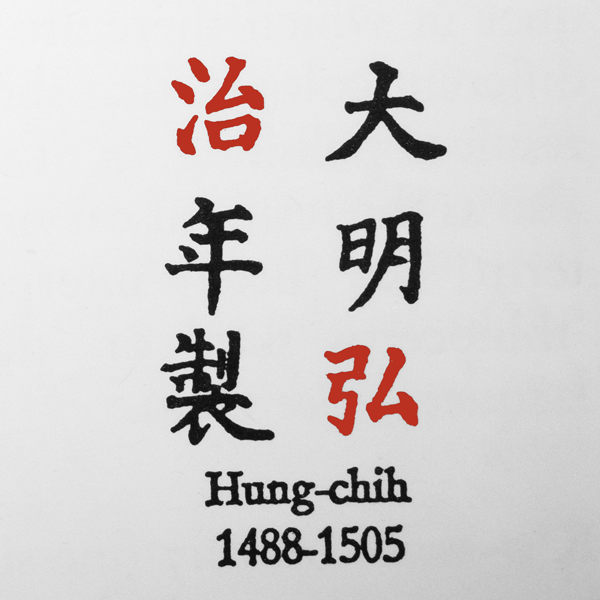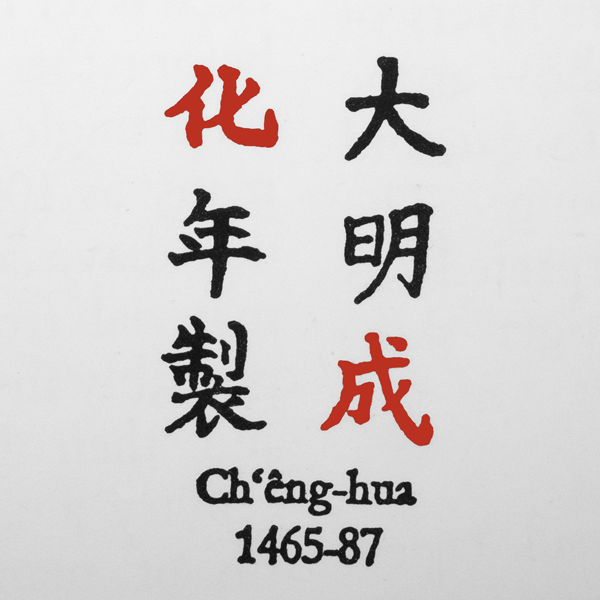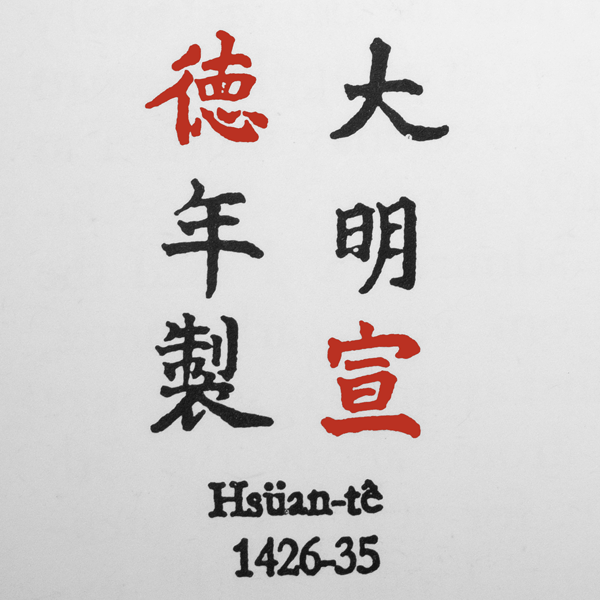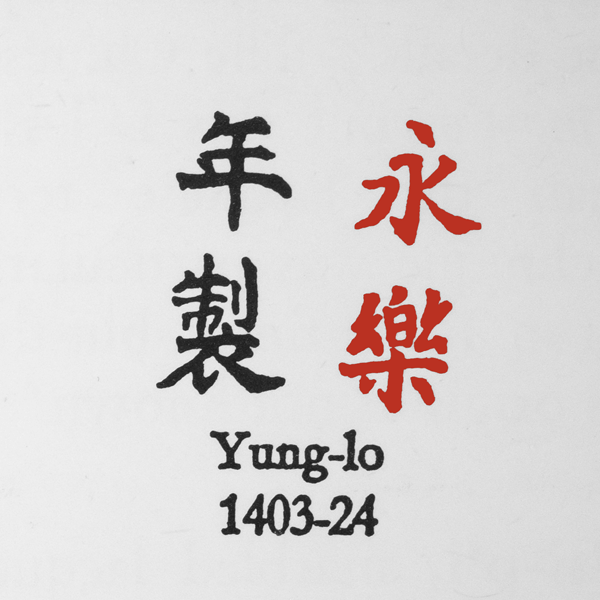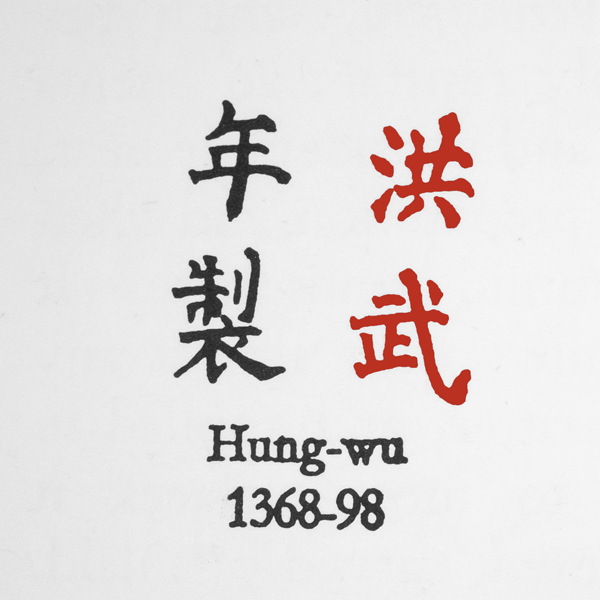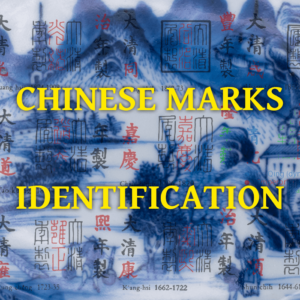
This page lists Chinese porcelain reign marks and seal marks of Qing and Ming Dynasty Emperors. Name of each Emperor is highlighted in red. Guide below explains how to read Chinese marks and meaning of the symbols surrounding the Emperor’s name. Additional antique and modern Chinese porcelain marks, as well as various pseudo-Chinese marks can be found at the bottom of this page.
Last update: June 2024
Chinese reign marks are read in columns, right to left and top to bottom. Mark on the left is written in traditional kaishu script while the mark on the right is written in stylized zhuanshu seal script. First two characters indentify the dynasty – in this case ‘Da Qing’ 大清 or Great Qing dynasty (blue). Next two characters (red) are the name of the emperor – in this case Qianlong 乾隆. Last two characters ‘Nian Zhi’ 年製 (green) simply mean made (during the reign of). Thus, we can read this reign mark as Made in the Great Qing Dynasty during the reign of the Emperor Qianlong.
Each six-character Chinese reign mark can also be written in its four-character form by simply omitting the first two characters – see Jiaqing mark below written simply as ‘Jia Qing Nian Zhi’ 嘉慶年製 – Made during the reign of the Emperor Jiaqing.
Chinese reign and seal marks on porcelain are usually hand-written in underglaze blue or over the surface of the glaze in iron red pigment. They can sometimes also be incised or stamped/carved in relief and glazed over. Later 19th and 20th century marks are sometimes printed using rubber stamp in either red or blue.

Marks on Chinese porcelain are often ‘apocryphal’ – later pieces are commonly marked with reign marks of earlier Emperors, either as a sign of respect or to mislead the buyer.
Use our identification service to find out whether your item is a genuine antique or just a reproduction.

 New in our eBay shop
New in our eBay shop
Qing Dynasty (1644-1912)
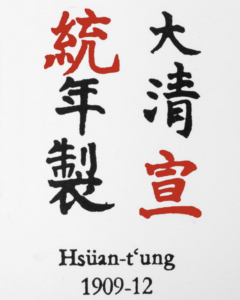
See examples on eBay →
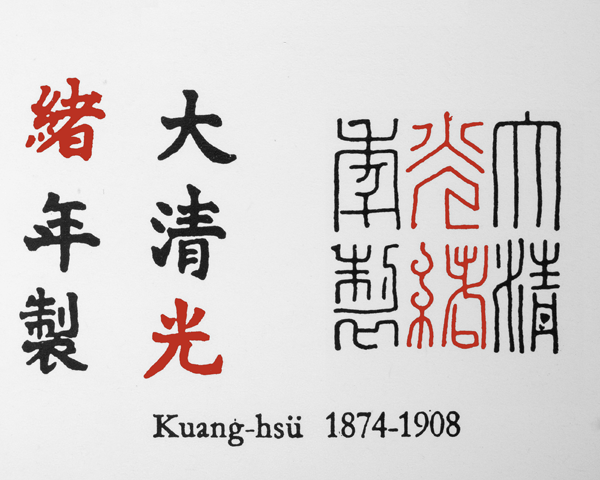
See examples on eBay →
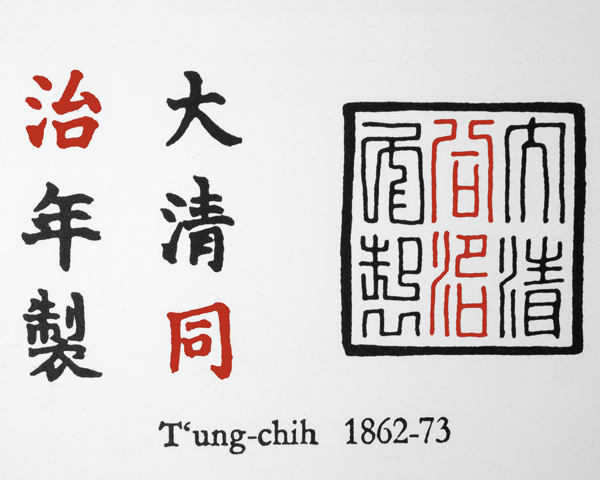
See examples on eBay →
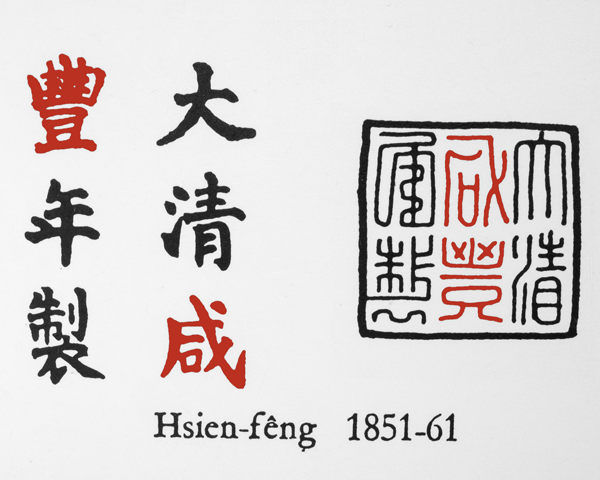
See examples on eBay →
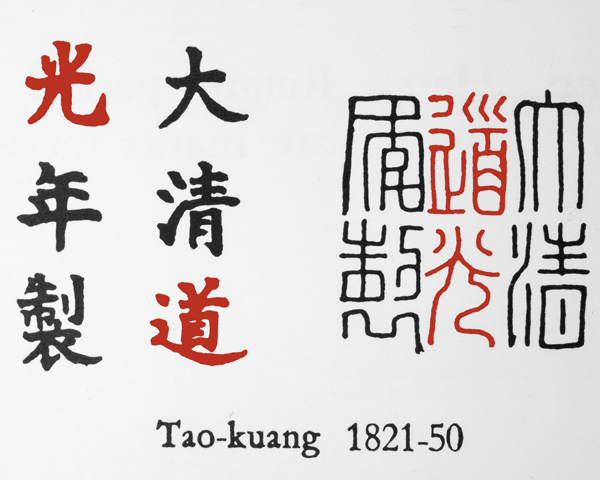
See examples on eBay →
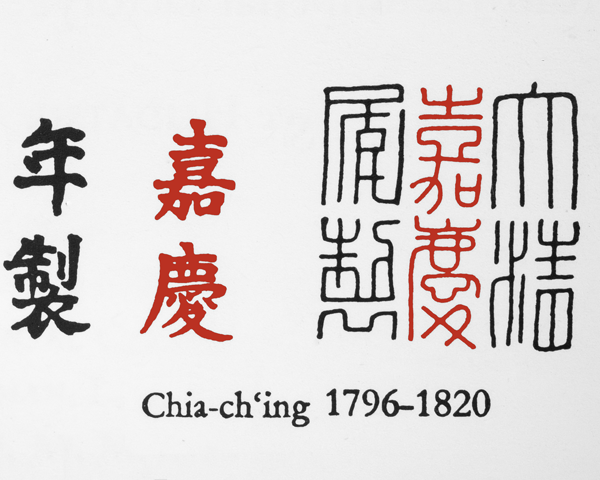
See examples on eBay →
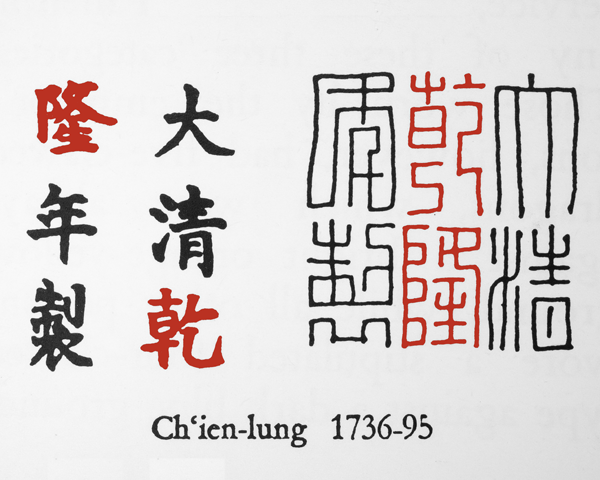
See examples on eBay →
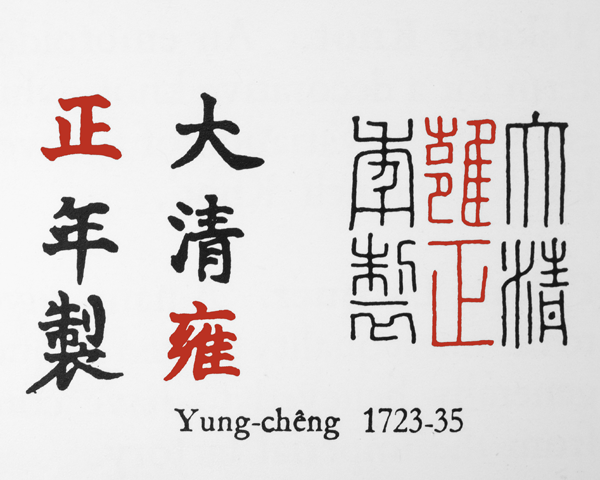
See examples on eBay →
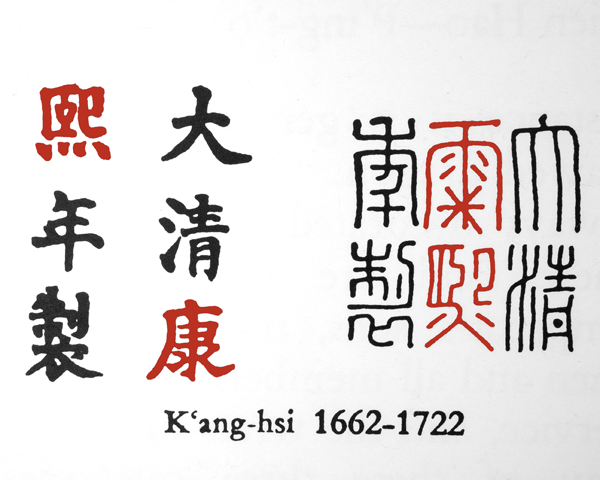
See examples on eBay →
List of Chinese Emperors – Qing Dynasty (1644-1912)
Xuantong (1908-1912)
Guangxu (1875-1908)
Tongzhi (1861-1875)
Xianfeng (1850-1861)
Daoguang (1820-1850)
Jiaqing (1796-1820)
Qianlong (1735-1796)
Yongzheng (1722-1735)
Kangxi (1661-1722)
Shunzhi (1644-1661)
Ming Dynasty (1368-1644)
List of Chinese Emperors – Ming Dynasty (1368-1644)
Chongzhen (1627-1644)
Tianqi (1620-1627)
Taichang (1620)
Wanli (1572-1620)
Longqing (1566-1572)
Jiajing (1521-1566)
Zhengde (1505-1521)
Hongzhi (1487-1505)
Chenghua (1464-1487)
Yingzong of Ming (1457-1464)
Jingtai (1449-1457)
Yingzong of Ming (1435-1449)
Xuande (1425-1435)
Hongxi (1424-1425)
Yongle (1402-1424)
Jianwen (1398-1402)
Hongwu (1368-1398)
Other Marks Found on Chinese Porcelain
Marks found on antique and modern Chinese porcelain are by no means restricted to seal marks and reign marks pictured above. There are many different types of Chinese markings, symbols and pictograms that can be found on on antique ceramics – in underglaze blue as well as in overglaze enamels. Modern Chinese porcelain also features a wide variety of factory marks and signatures that are often stamped over the glaze in red or blue enamels. Below is just a small selection of these marks. We will regularly update this list.
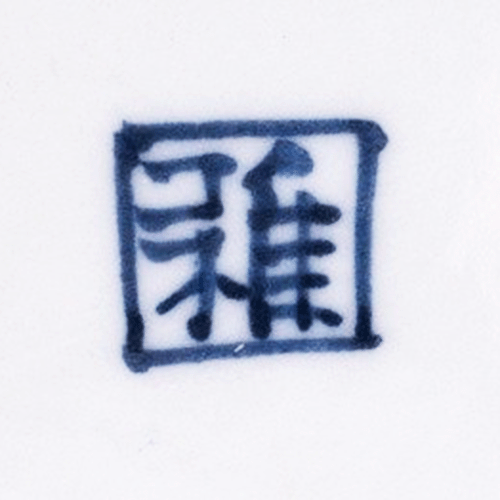
Underglaze blue square mark with character 雅 ‘Ya’ (elegance) inside. Found on a late Ming, c. Chongzhen period (1627-1644), rectangular ko-sometsuke dish.
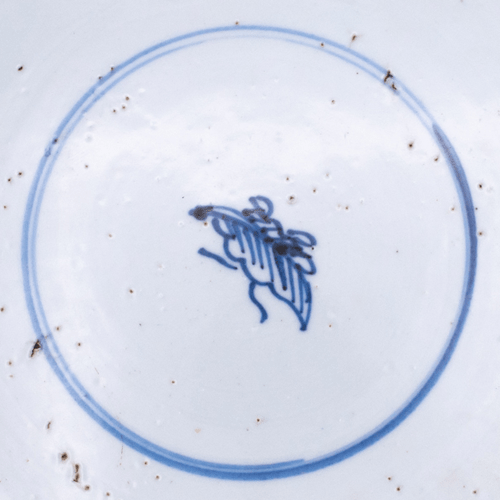
Underglaze blue symbol of Artemisia leaf inside double circle typical for 17th century Kangxi period porcelain. Use of reign marks during this time was restricted as a result of the political situation. This mark comes from a large wucai decorated porcelain charger. Other symbols used during this time were individual depictions of precious Buddhist symbols (Astamangala), rabbits, lingzhi fungi, incense burners and others.
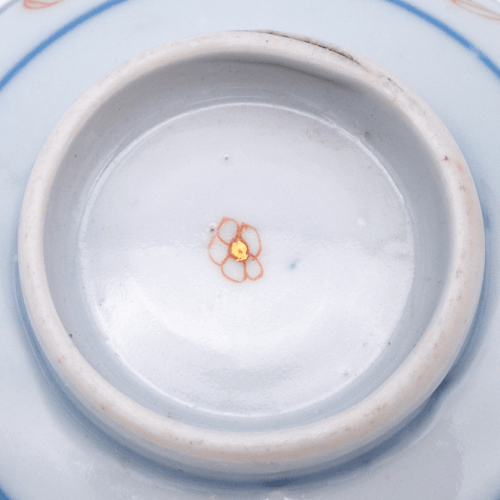
Unusual flower symbol mark found on an 18th century Chinese imari-decorated export porcelain tea bowl. Symbol is done in overglaze iron red with gold in the middle. Flower with five round petals usually represents prunus blossom.
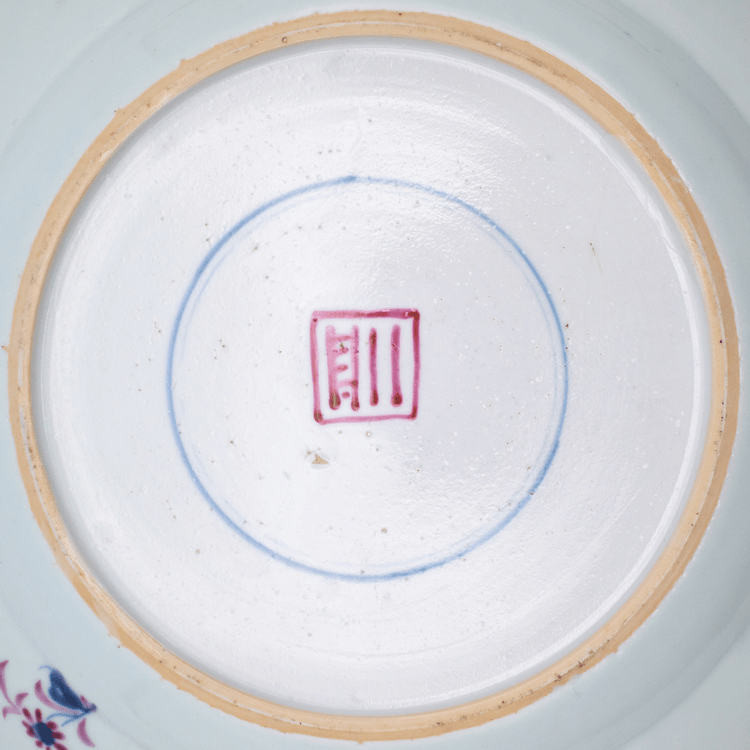
Unusual rectangular puce mark found on an 18th century blue and white export porcelain dish decorated with puce and gold overglaze enamels.
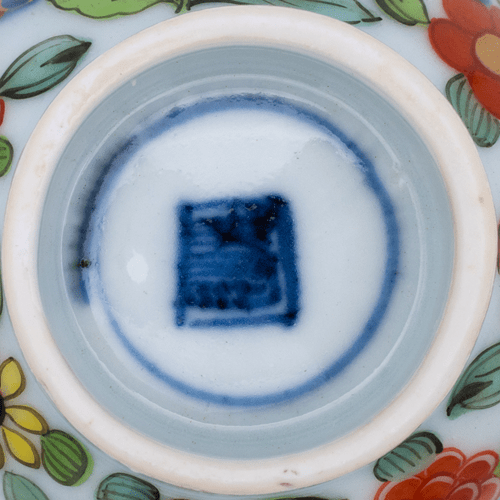
Underglaze blue rectangular Chinese shop mark inside single or double circles – often found on 18th and 19th century porcelain. These are either geometric patterns inside a square or more commonly stylized signatures that are very often impossible to decipher. This example is from a Chinese blue and white tea bowl with later European overglaze decoration.
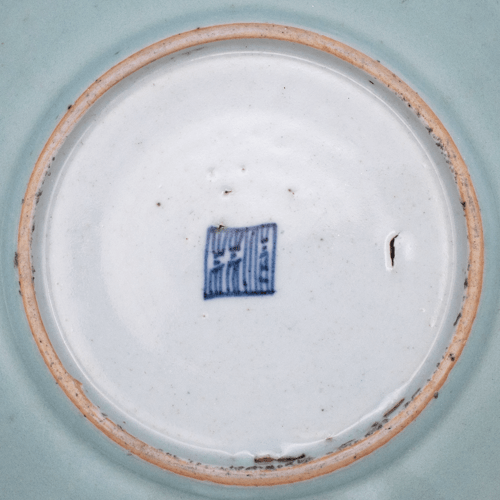
Square underglaze blue shop mark on a 19th century celadon-ground Canton famille rose decorated dish.
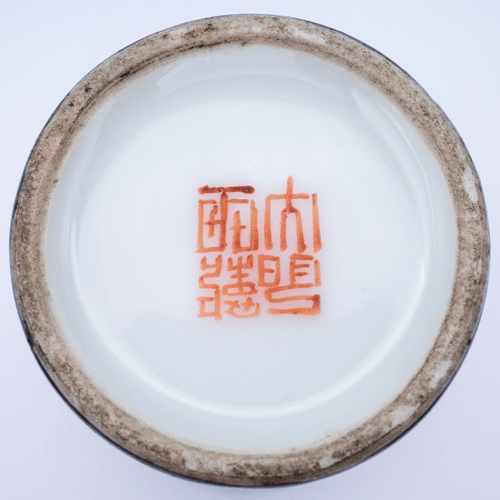
Very unusual iron red four-character seal mark found on a 19th century porcelain snuff bottle. It appears to be apocryphal Ming dynasty mark that reads 大明年製 ‘Da Ming Nian Zhi’.
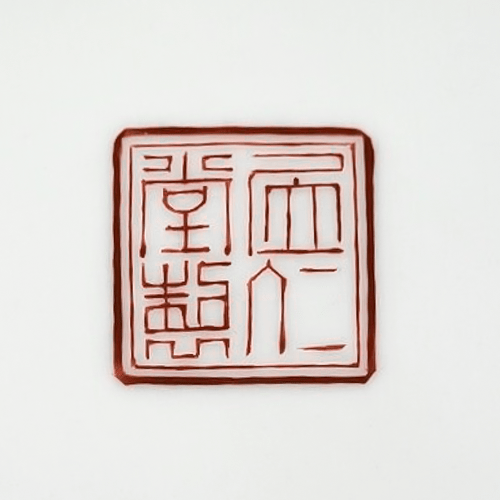
Jurentang – 居仁堂製 ‘Jurentang Zhi ‘ – this square iron red mark translates as ‘Hall of Dwelling in Benevolence’ which was the abode of the first president of Chinese Republic, Yuan Shikai (1859-1916). This early Republic period mark can sometimes also be found on later 20th century PRoC porcelain examples (usually not as neat as period examples and slightly irregular).
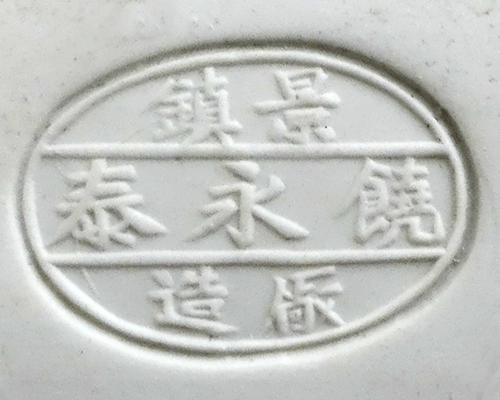
Rao Yongtai – impressed oval mark that reads 景镇 饶永泰 廠造 – Jingzhen (short for Jingdezhen), Rao Yongtai, factory made. Found on Republic Period porcelain (1912-1949).
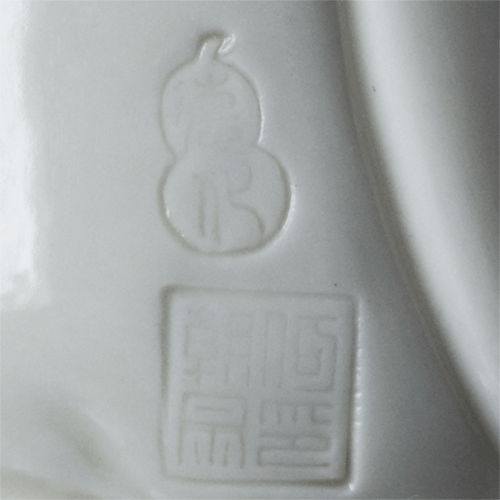
He Chaozong – impressed double gourd mark and a rectangular seal ‘何朝宗印’ of this 17th century Master potter, often found on later 20th century Dehua (Blanc de Chine) figurines of Guanyin and other spiritual figures.
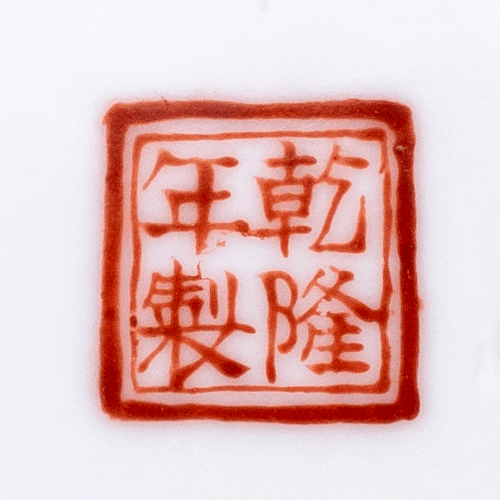
Hand-painted iron red rectangular four-character Qianlong mark 乾隆年製 ‘Qianlong Nian Zhi’ found on famille rose porcelain dating to the early PRoC period, mid-20th century.
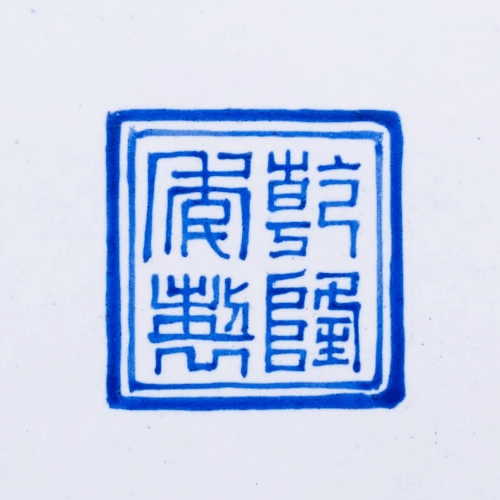
Blue rectangular four-character Qianlong seal mark 乾隆年製 ‘Qianlong Nian Zhi’ (apocryphal). Found on a 20th century Chinese Canton enamel (enamel on copper) bitong brush pot.
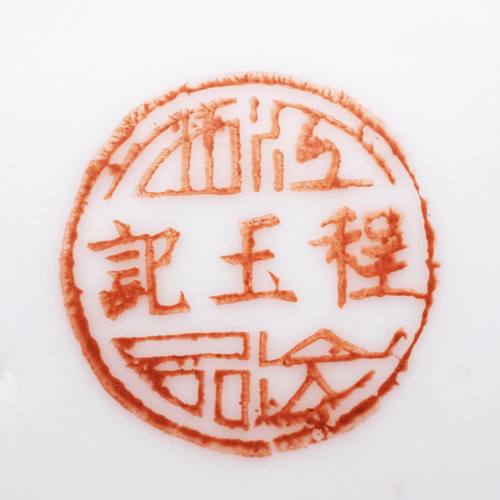
Modern Chinese porcelain mark on famille rose decorated plate that reads 江西 程玉記 出品 ‘Jiangxi Cheng Yu Ji Chu Pin’ (Jiangxi, product of Cheng Yu Ji). Thera are many different variations of this type of stamped red circular marks known on later 20th century porcelain with different names in the middle row.
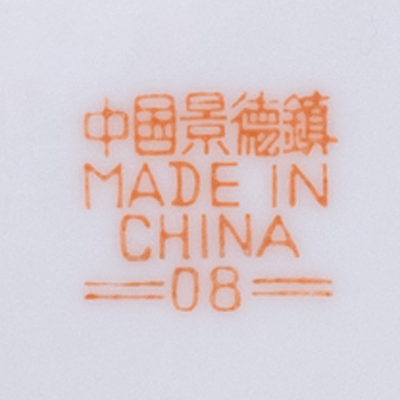
Stamped red Chinese mark on vintage porcelain that reads 中国景德镇 ‘Zhongguo Jingdezhen’ (China, Jingdezhen), MADE IN CHINA and with Jingdezhen factory number 08 at the bottom. Again, there are many variations of this mark with different factory numbers or letters.
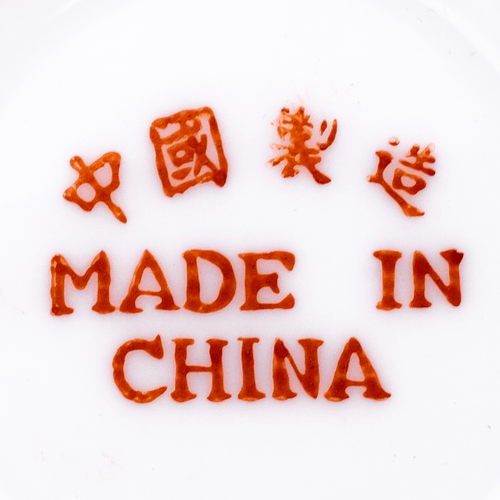
Another version of later 20th century stamped red porcelain mark that reads 中国製造 ‘Zhongguo Zhi Zao’ MADE IN CHINA
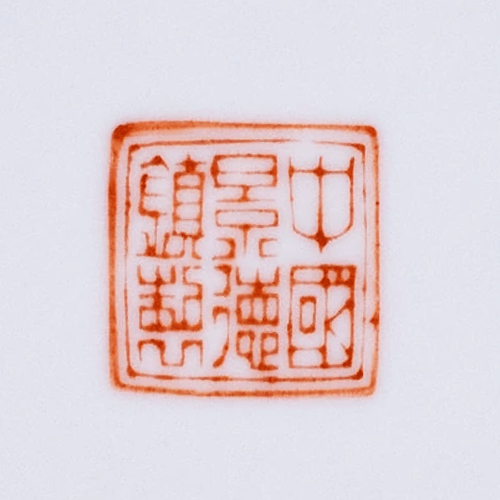
Iron red stamped mark in seal script that reads 中国景德镇製 ‘Zhongguo Jingdezhen Zhi’ (Made in Jingdezhen, China). Found on later 20th century Chinese porcelain.
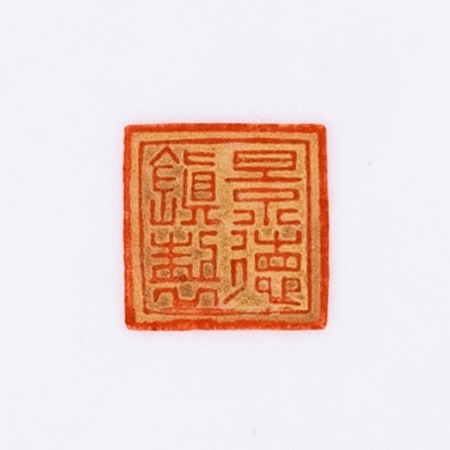
Shortened version of the mark above. Stamped iron red mark with gold background. Reads 景德镇製 ‘Jingdezhen Zhi’ (Made in Jingdezhen). Found on 20th century vintage Chinese porcelain.
Pseudo Chinese Porcelain Marks on Clobberware and European Chinoiserie Ceramics
You might sometimes come across nonsensical Chinese looking marks on Chinese porcelain that has been overdecorated (‘clobbered’) in Europe, as well as on some European porcelain and ceramics made in Chinese style. Here’s just a few examples of what these mock Chinese marks look like – they are usually done over the glaze in iron red enamel but can sometimes also be done in underglaze blue such as on some examples of Mason’s ironstone.
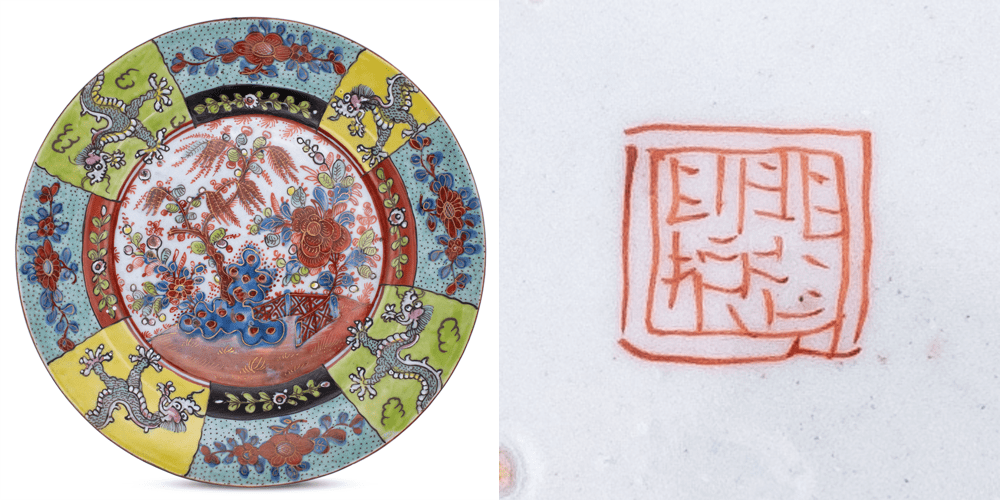
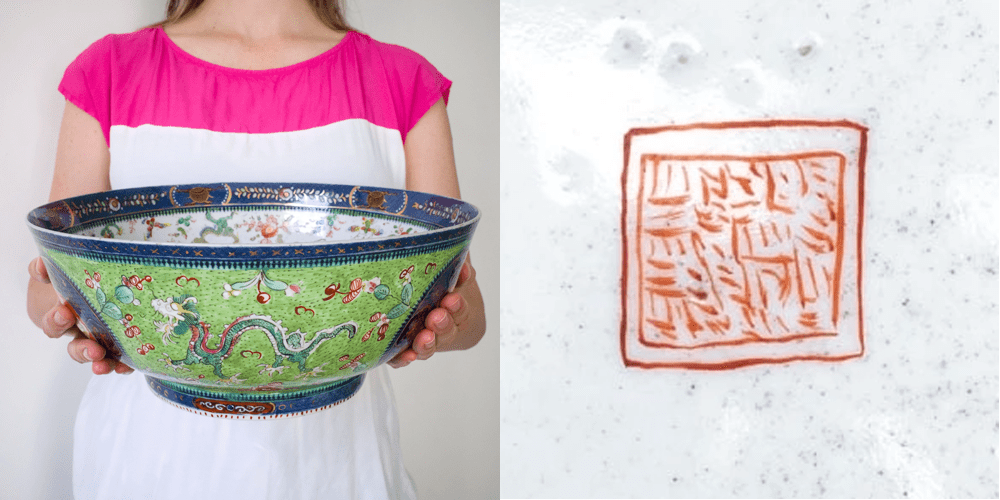
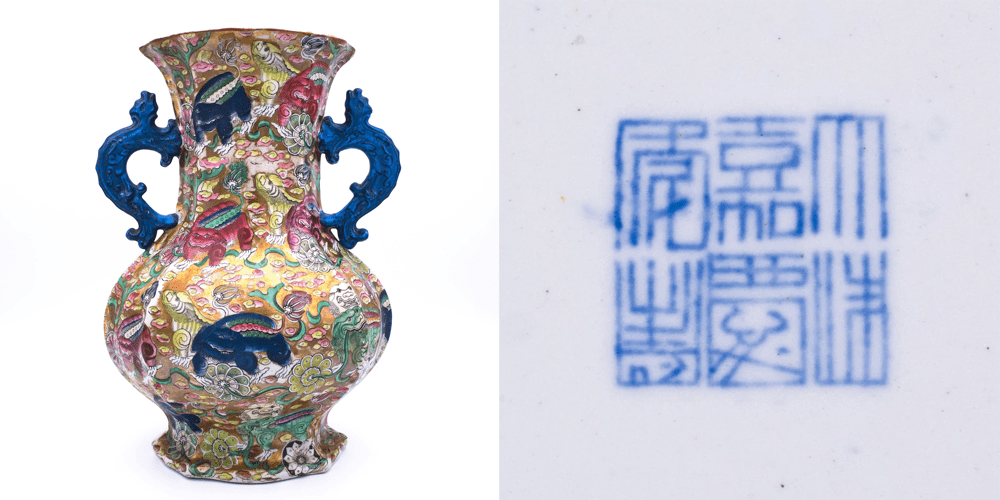
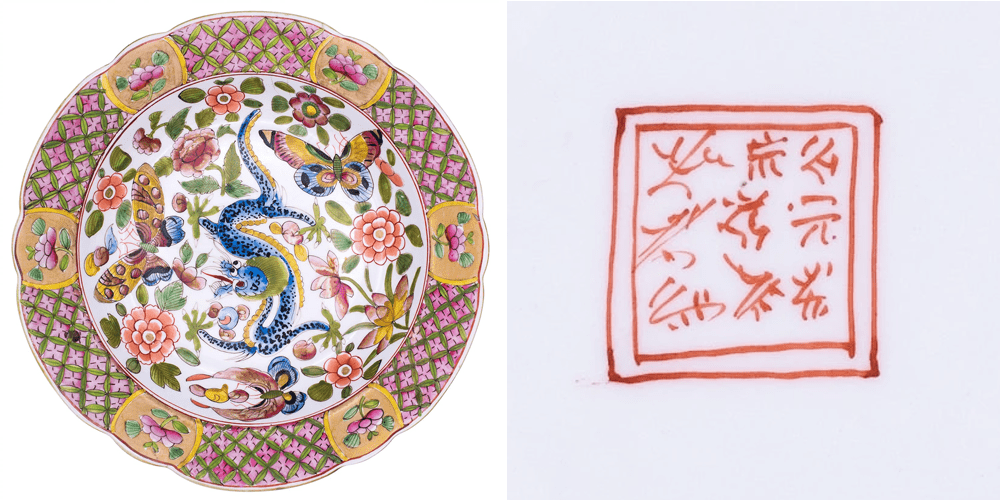
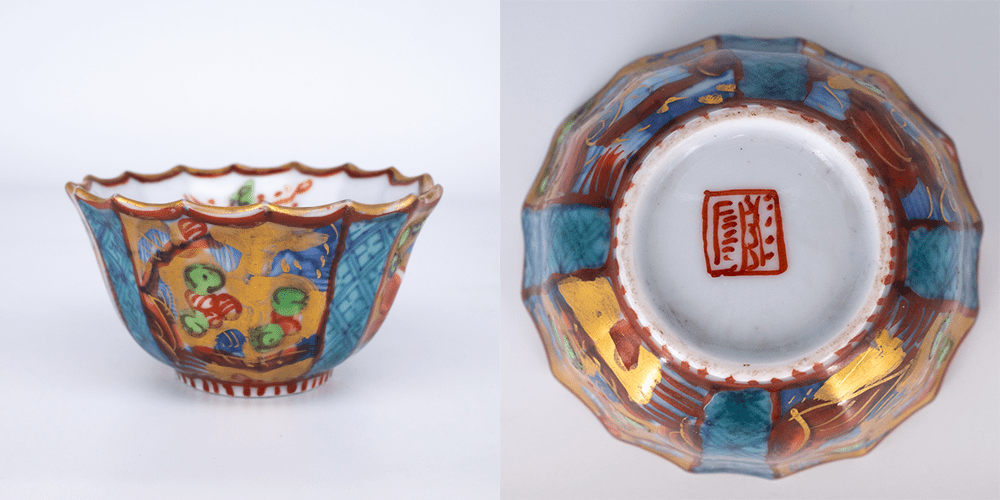
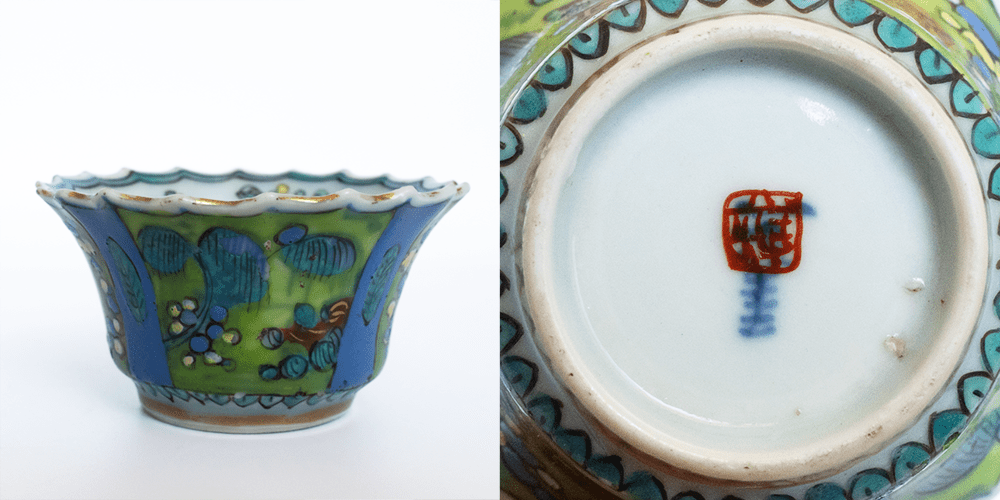
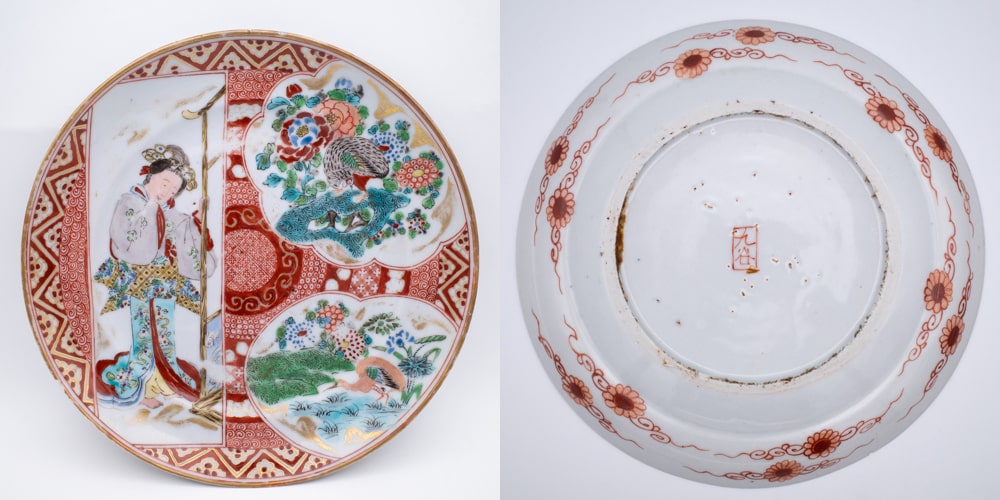
Need more help?




